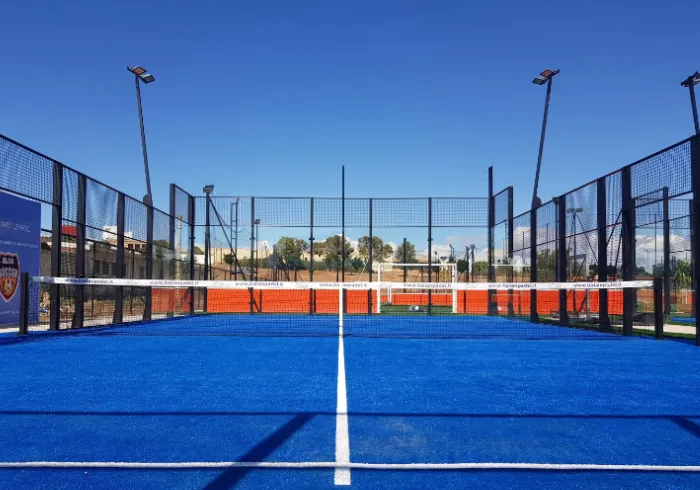
- Afrikaans
- Albanian
- Arabic
- Armenian
- Azerbaijani
- Basque
- Belarusian
- Bengali
- Bosnian
- Bulgarian
- Croatian
- Czech
- Danish
- Dutch
- English
- Esperanto
- Estonian
- Finnish
- French
- Galician
- Georgian
- German
- Greek
- hawaiian
- Hindi
- Hungarian
- Indonesian
- irish
- Italian
- Lao
- Latvian
- Lithuanian
- Luxembourgish
- Macedonian
- Maltese
- Myanmar
- Norwegian
- Polish
- Portuguese
- Romanian
- Russian
- Serbian
- Slovak
- Somali
- Spanish
- Swedish
- Thai
- Turkish
- Turkmen
- Vietnamese
Dec . 05, 2024 01:41 Back to list
standard welded wire mesh sizes
Understanding Standard Welded Wire Mesh Sizes
Welded wire mesh is a versatile and widely-used material that plays a crucial role in various construction and industrial applications. Its strength and durability make it an excellent choice for reinforcing concrete, fences, and agricultural uses. One of the key aspects to understand when choosing welded wire mesh is its sizing specifications, as these dimensions can significantly impact the effectiveness and suitability of the material for specific projects.
The Basics of Welded Wire Mesh
Welded wire mesh consists of a series of vertical and horizontal wires that are welded together at their intersections. This creates a grid-like pattern that provides structural integrity and resistance against tensile forces. The wires come in various diameters, typically ranging from 0.5 mm to 6 mm, and the mesh openings vary in size, which can be tailored to the requirements of a specific task.
Standard Sizes of Welded Wire Mesh
Welded wire mesh is available in various standard sizes, which are predetermined to meet the demands of the construction and agricultural sectors. Common standard mesh sizes include
1. Mesh Opening Sizes Welded wire mesh is categorized based on the size of its openings. Common openings are 1 inch x 1 inch, 2 inches x 2 inches, and 2 inches x 4 inches. The choice of opening size is influenced by the intended application, whether it be for fencing, concrete reinforcement, or animal enclosures.
2. Sheet Sizes The overall dimensions of welded wire mesh sheets often come in standard sizes such as 4 feet x 10 feet or 5 feet x 10 feet. These dimensions facilitate easy handling and installation and are often used in construction projects.
3. Wire Diameter The thickness of the wire used in welded wire mesh is crucial for determining its strength and load-bearing capacity. Standard diameters range from 14 gauge (approximately 1.63 mm) to 6 gauge (approximately 4.11 mm). For heavier applications, such as commercial or industrial use, thicker wires are preferred.
standard welded wire mesh sizes

4. Panel and Roll Sizes Welded wire mesh is available in both panels and rolls, with roll sizes typically being 36 inches, 48 inches, or 60 inches wide. The length can vary, allowing for customization depending on project needs.
Factors Influencing Mesh Size Selection
Several factors should be considered when selecting the appropriate standard welded wire mesh size for a project
- Load Requirements Assess the structural load that the mesh will need to bear. Heavier loads require stronger wire and smaller openings to provide greater support.
- Environmental Conditions Outdoor applications may expose welded wire mesh to weather elements, so corrosion-resistant coatings or galvanized options may be necessary
- Specific Applications Different applications necessitate different mesh sizes. For example, agricultural uses might require larger openings for ventilation, while security fencing might need smaller openings to deter intruders.
Conclusion
Welded wire mesh is a fundamental material that significantly impacts construction processes, agricultural practices, and security solutions. By understanding the standard sizes and factors affecting the selection of welded wire mesh, contractors, builders, and DIY enthusiasts can make informed decisions that ensure the success and longevity of their projects. Whether for reinforcing concrete slabs or providing a sturdy barrier, choosing the right mesh size is essential for achieving optimal results in any application.
-
Welded Mesh for Sale: Durable Wire Fabric & Fencing Solutions
NewsAug.31,2025
-
Razor Wire For Sale - Buy High-Security Concertina Wire
NewsAug.30,2025
-
Shop Galvanized Horse Panels for Sale | Durable & Secure Fencing
NewsAug.29,2025
-
Wholesale T Posts: Bulk Metal & Steel T Posts for Sale
NewsAug.28,2025
-
Comprehensive Guide to Wire Mesh Solutions: Security, Durability, and Customization
NewsAug.24,2025
-
Comprehensive Guide to Welded Fencing Solutions: Durability, Security, and Style
NewsAug.24,2025









